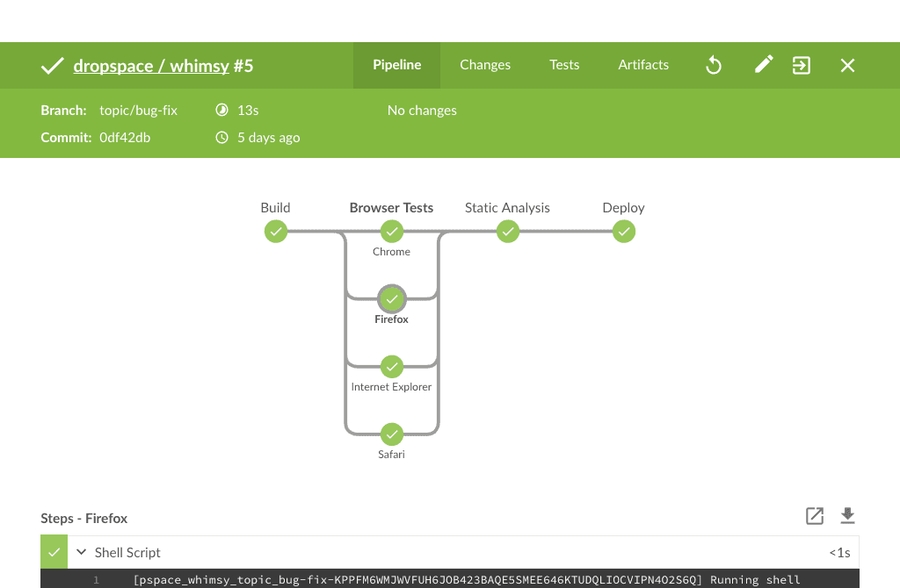DevOps
UI
Grafana - TS + Go
https://github.com/grafana/grafana
Search dashboards & copy ID to /dashboard/import: https://grafana.com/grafana/dashboards/
no login: https://grafana.com/docs/grafana/latest/setup-grafana/configure-security/configure-authentication/grafana/#anonymous-authentication
Monitoring
https://en.wikipedia.org/wiki/Comparison_of_network_monitoring_systems
Prometheus - Go + TS
https://github.com/prometheus/prometheus Grafana: https://grafana.com/grafana/dashboards/1860-node-exporter-full/ | {url}?var-node=
InfluxDB Telegraf
https://www.influxdata.com/blog/getting-started-with-influxdb-2-0-scraping-metrics-running-telegraf-querying-data-and-writing-data/
Grafana Promtail
agent : local logs -> loki : https://grafana.com/docs/loki/latest/clients/promtail/
Zabbix - C/PHP/JAVA
https://github.com/zabbix/zabbix
server - Docker
https://www.zabbix.com/documentation/4.0/manual/installation/containers
agent
Nagios - C
https://github.com/NagiosEnterprises/nagioscore https://github.com/centreon/centreon https://github.com/NagVis/nagvis
Docker
https://hub.docker.com/r/jasonrivers/nagios/
Elastic
Beats - Go
https://www.elastic.co/products/beats https://github.com/elastic/beats
Cacti - PHP
https://github.com/Cacti/cacti
https://hub.docker.com/r/smcline06/cacti
alert
https://github.com/Yelp/elastalert https://github.com/sirensolutions/sentinl
https://sematext.com/blog/x-pack-alternatives/
TICK stack
https://gist.github.com/travisjeffery/43f424fbd7ac677adbba304cef6eb58f
Telegraf
Data collector
InfluxDB
Stores data
Chronograf
Visualizer
Kapacitor
Alerter
Pandora FMS - PHP/Perl
https://github.com/pandorafms/pandorafms#screenshots
open-falcon - Go + Python Flask
https://github.com/open-falcon/falcon-plus/tree/master/docker v0.3: May 30, 2019
https://github.com/open-falcon/falcon-plus/blob/master/docker/README.md
Munin - Perl/Shell
networked resource monitoring tool http://munin-monitoring.org/ http://guide.munin-monitoring.org/en/latest/tutorial/index.html
netdata - C/Python/JS/Shell
https://github.com/firehol/netdata (with screenshots) https://github.com/firehol/netdata/wiki/Installation
Management
Fabric - Python library
https://github.com/fabric/fabric Fabric is a high level Python (2.7, 3.4+) library designed to execute shell commands remotely over SSH, yielding useful Python objects in return.
Fabric (1.x and earlier) was a hybrid project implementing two feature sets: task execution (organization of task functions, execution of them via CLI, and local shell commands) and high level SSH actions (organization of servers/hosts, remote shell commands, and file transfer).
invoke - Python library
https://github.com/pyinvoke/invoke When planning Fabric 2.x, having the “local” feature set as a standalone library made sense, and it seemed plausible to design the SSH component as a separate layer above. Thus, Invoke was created to focus exclusively on local and abstract concerns, leaving Fabric 2.x concerned only with servers and network commands.
Terraform
https://github.com/hashicorp/terraform
Self Managed, always free: https://developer.hashicorp.com/terraform/downloads
Ansible - Python
https://github.com/fzinfz/ansible
Puppet - Ruby
https://hub.docker.com/u/puppet/ https://puppet.com/products/why-puppet/puppet-enterprise-and-open-source-puppet
Chef - Ruby
https://hub.docker.com/r/chef/chef/
SaltStack - Python
https://github.com/saltstack/salt https://hub.docker.com/r/saltstack/
Agentless: https://docs.saltstack.com/en/latest/topics/ssh/index.html
CI
Jenkins - JAVA
https://github.com/jenkinsci/jenkins 
https://github.com/jenkinsci/docker/blob/master/README.md#usage
https://wiki.jenkins.io/pages/viewpage.action?pageId=75893612
run on all nodes: elastic-axis
Travis - Ruby/JS
https://github.com/travis-ci/travis-ci
SNMP
https://en.wikipedia.org/wiki/Simple_Network_Management_Protocol
v1: Authentication of clients is performed only by a "community string", in effect a type of password, which is transmitted in cleartext. v2c comprises SNMPv2 without the controversial new SNMP v2 security model, using instead the simple community-based security scheme of SNMPv1. incompatible with SNMPv1 in two key areas: message formats and protocol operations. v2u: greater security than SNMPv1, but without incurring the high complexity of SNMPv2. v3 primarily added security and remote configuration enhancements to SNMP.
the agent connects to the server on port 162 port 161 on the agent side is used for queries
More
https://github.com/bregman-arie/devops-resources#devops-tooling
Last updated
Was this helpful?